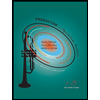
Practical Management Science
6th Edition
ISBN: 9781337406659
Author: WINSTON, Wayne L.
Publisher: Cengage,
expand_more
expand_more
format_list_bulleted
Question
The bullwhip effect (also known as the Forrester effect) is defined as the demand distortion that travels upstream in the supply chain from the retailer through to the wholesaler and manufacturer due to the variance of orders which may be larger than that of sales.
What causes the bullwhip effect in supply chain?
Demand forecast updating: Members of the supply chain updating their demand forecasting
Order batching: Members of the supply chain rounding up or down the quantity of orders
Price fluctuations: Usually driven by discounting resulting in larger quantities of purchases
Rationing and gaming: Buyers and sellers delivering over or under their order quantities
An example of the bullwhip effect
Let’s consider a retailer sells on average 10 ice creams per day in the summer season. Following a heatwave the retailer's sales increase to 30 units per day, in order to meet this new demand, the retailer increases their demand forecast and places an increased order on the wholesaler to 40 units per day in order to meet the new customer demand levels and to buffer any potential further increase in demand, this creates the first wave in the exaggerated demand being driven down the supply chain.
The wholesaler noticing this increase in demand from the retailer may then also build an incremental increase into their forecast so generating a larger order on the ice cream manufacturer, rather than ordering 40 units to be manufactured, the wholesaler may order 60 units from the manufacturer, this will further exaggerate the demand down the supply chain and so creates a second wave of demand increase.
The manufacturer also feeling the increase in demand from the wholesalers may also react to the increase by increasing their manufacturing run to 80 units, this creates a third wave in the exaggeration of demand.
The retailer may run out of stock during the heatwave whilst the manufacturer is producing new stock and may take the option of switching to an alternative brand to meet customer demand, this will then create a false demand situation as sales appear to slump to next to nothing so the retailer may then not place further demand for the original ice cream brand even though the manufacturer has increased their production runs. Alternatively, if the weather changes and the end consumers slow down on purchasing ice creams, this could result in an overstock situation across the supply chain as each tier of the supply chain has reacted to the heatwave sales and increased their demand. This is an example of the waves and
How can the supply chain reduce the bullwhip effect?
The bullwhip effect in supply chain can be reduced through shared knowledge with suppliers and customers. If members of supply chain can determine what information is causing the overreactions this can be resolved. and response times can be improved using modern technology.
The bullwhip effect can be mitigated through these areas:
Reduced
Revision of reordering procedures/better forecasting methoIntegration of planning and performance measurement
Expert Solution
This question has been solved!
Explore an expertly crafted, step-by-step solution for a thorough understanding of key concepts.
Step by stepSolved in 3 steps

Knowledge Booster
Similar questions
- Can someone help me with the following problems. Thank youarrow_forwardInventory on a company's balance sheet is Group of answer choices The product available for sale in the business's day-to-day operations Supplies available for sale in the business's day-to-day operations Equipment, furniture, and fixtures of the business All of the abovearrow_forwardWhen input costs increase O the supply curve shifts to the right the supply curve shifts to the left O there is a movement down along an existing supply curve there is a movement up along an existing supply curvearrow_forward
- You are the president of XYZ Manufacturing company. You have recently learned about the following issue: A month ago, the company’s general manager (GM) told one of the line managers to produce an extra 15,000 units of a product so that there would be inventory in stock for the next time the item is ordered. Last week, the GM scolded the line manager for having 15,000 units of the item in stock. The GM told the line manager that producing excess inventory costs the company money and should never be done. The GM then puts the line manager on a performance plan. This is not the first time you have heard about the GM telling an employee to do one thing only to criticize him or her for doing it later. This employee feels very frustrated by this, but does not want to make a formal complaint because she has seen other employees lose their jobs or get demoted for questioning the GM. Create an outline that proposes a leadership solution to this issue. The outline should address the following:…arrow_forwardDon't use Aiarrow_forwardServices differ from products because Cannot be forecast Are subject to labor rates Are dependent on labor They cannot be weighed and usually require interaction with a companyarrow_forward
- Please help me understand the problem Problem Intro: Cold-Chain in health care is defined as a temperature control supply chain involving a system of transporting and storing vaccines and drugs. It consists of three major components: transport and storage equipment, training personnel, and efficient management procedures. The majority of the vaccine in the cold chain is typically maintained at a temperature of 2-8°C. Maintaining cold chain integrity is extremely important for healthcare product manufacturers. Especially for the vaccines, improper storage, and handling practices that compromise vaccine viability prove a costly, time-consuming affair. Vaccines must be stored properly from manufacture until they are available for use. Any extreme temperatures of heat or cold will reduce vaccines potency; such vaccines, if administered, might not yield effective results or could cause adverse effects. Case Description link : http://bit.ly/2hRAgYE answer the following questions based on…arrow_forwardImagine that you are the chief operations officer (COO) of Amazon.com. You are interested in creating a competitive advantage for your company (compared to other online retailers) in that you wish to be able to provide to your customers faster shipping than you have been able to provide with your existing set of warehouses and fulfillment centers. It has been decided that using overnight shipping on every order (which would, of course, be about as quick as shipping could be) has been eliminated as a possibility due to being prohibitively expensive. Describe what you would recommend as the COO to improve the speed with which Amazon.com customers receive the products that they have ordered. What negative consequences or disadvantages, if any, do you see as a result of your proposed solution?arrow_forwardPlease do not give solution in image format thankuarrow_forward
- Toothpaste and soap generally exhibit a _______ pattern of demand. Group of answer choices Cyclic Level or horizontal Seasonal Trendarrow_forwardPlease answer questions 9 and 10 based on this data. Daily demand for packages of five videotapes at a warehouse store is found to be normally distributed with a mean of 50 and a standard deviation of 5. When the store orders more tapes, the orders take four days to arrive. Assume the store is open 360 days a year. If the store wants the probability of stocking out to be no more than 5%, and demand each day is independent of the day before, what should be the safety stock? Please round your answer to two decimals. Safety stock= 17 Question 10 4 pts If the store wants the probability of stocking out to be no more than 5%, and demand each day is independent of the day before, what reorder point should be set? Please round your answer to two decimals. Reorder point=arrow_forwardPlease simply answer part barrow_forward
arrow_back_ios
SEE MORE QUESTIONS
arrow_forward_ios
Recommended textbooks for you
 Practical Management ScienceOperations ManagementISBN:9781337406659Author:WINSTON, Wayne L.Publisher:Cengage,
Practical Management ScienceOperations ManagementISBN:9781337406659Author:WINSTON, Wayne L.Publisher:Cengage, Operations ManagementOperations ManagementISBN:9781259667473Author:William J StevensonPublisher:McGraw-Hill Education
Operations ManagementOperations ManagementISBN:9781259667473Author:William J StevensonPublisher:McGraw-Hill Education Operations and Supply Chain Management (Mcgraw-hi...Operations ManagementISBN:9781259666100Author:F. Robert Jacobs, Richard B ChasePublisher:McGraw-Hill Education
Operations and Supply Chain Management (Mcgraw-hi...Operations ManagementISBN:9781259666100Author:F. Robert Jacobs, Richard B ChasePublisher:McGraw-Hill Education
 Purchasing and Supply Chain ManagementOperations ManagementISBN:9781285869681Author:Robert M. Monczka, Robert B. Handfield, Larry C. Giunipero, James L. PattersonPublisher:Cengage Learning
Purchasing and Supply Chain ManagementOperations ManagementISBN:9781285869681Author:Robert M. Monczka, Robert B. Handfield, Larry C. Giunipero, James L. PattersonPublisher:Cengage Learning Production and Operations Analysis, Seventh Editi...Operations ManagementISBN:9781478623069Author:Steven Nahmias, Tava Lennon OlsenPublisher:Waveland Press, Inc.
Production and Operations Analysis, Seventh Editi...Operations ManagementISBN:9781478623069Author:Steven Nahmias, Tava Lennon OlsenPublisher:Waveland Press, Inc.

Practical Management Science
Operations Management
ISBN:9781337406659
Author:WINSTON, Wayne L.
Publisher:Cengage,

Operations Management
Operations Management
ISBN:9781259667473
Author:William J Stevenson
Publisher:McGraw-Hill Education

Operations and Supply Chain Management (Mcgraw-hi...
Operations Management
ISBN:9781259666100
Author:F. Robert Jacobs, Richard B Chase
Publisher:McGraw-Hill Education


Purchasing and Supply Chain Management
Operations Management
ISBN:9781285869681
Author:Robert M. Monczka, Robert B. Handfield, Larry C. Giunipero, James L. Patterson
Publisher:Cengage Learning

Production and Operations Analysis, Seventh Editi...
Operations Management
ISBN:9781478623069
Author:Steven Nahmias, Tava Lennon Olsen
Publisher:Waveland Press, Inc.